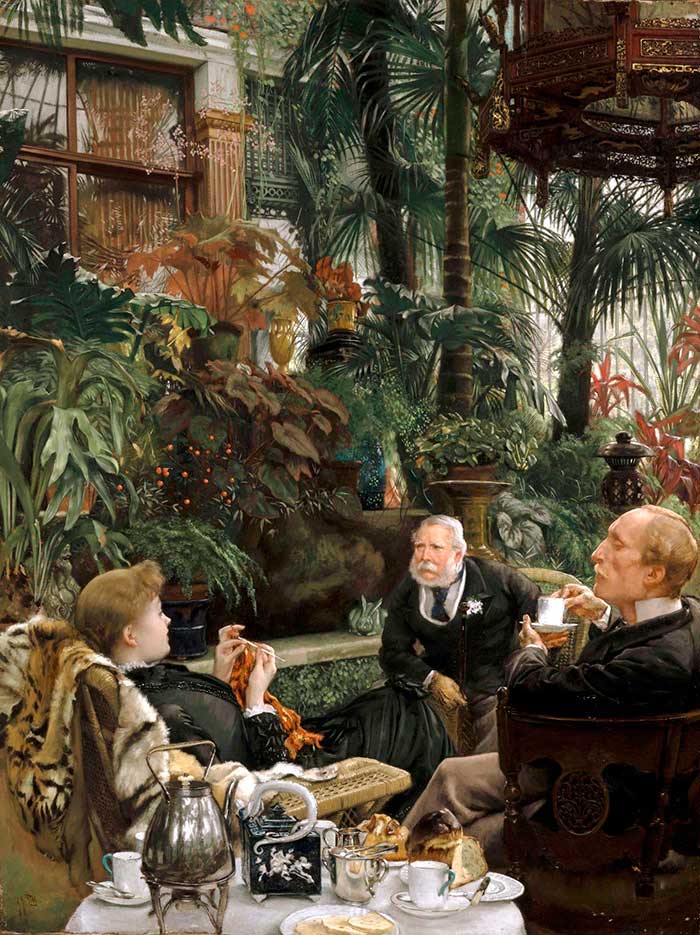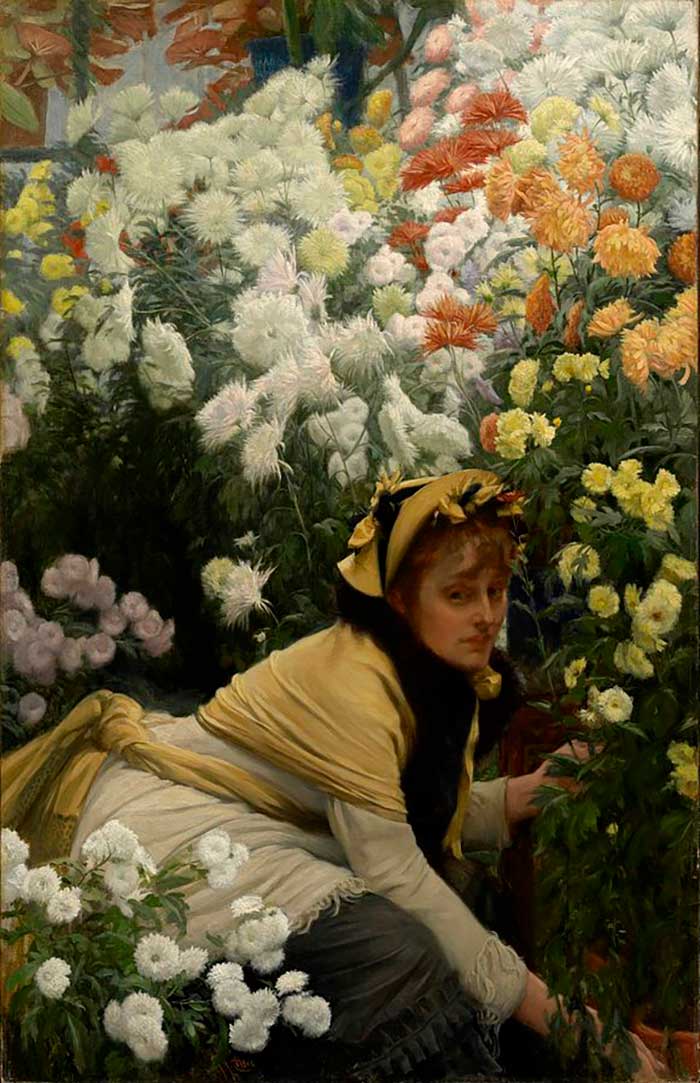

Born in Nantes, trained at the School of Fine Arts in Paris and developing his career on both sides of the English Channel, Jacques Joseph Tissot is an important artist of the second half of the 19th century, both ambiguous and fascinating.
In the late 1850s, Tissot took his first steps in the capital, where both his passion for Japanese art and his connections with the most influential circles fueled his painting. In the Parisian melting pot, at a time when the modernity theorized by Baudelaire found its expression in the brushes of Whistler, Manet, and Degas, Tissot and his dandyish spirit were appreciated by high society.
In addition to painting, James Tissot had the desire to express himself in various techniques, such as printmaking, photography, and honeycomb enamel.
After the war of 1870 he settled in London and continued a thriving career that allowed him to move in the highest circles.
Gradually, his work focused on the radiant and then declining figure of his companion Kathleen Newton, who was incessantly present in his paintings. Her death in 1882 sealed Tissot's return to France.
His career continued with the depiction of the many variations of Parisian women, the subject of an important cycle (Woman in Paris), ]), and explorations of mystical and religious themes, with the cycle of the Prodigal Son and hundreds of illustrations from the Bible, which would make the artist immensely famous at the turn of the 19th to the 20th century.



0 comments